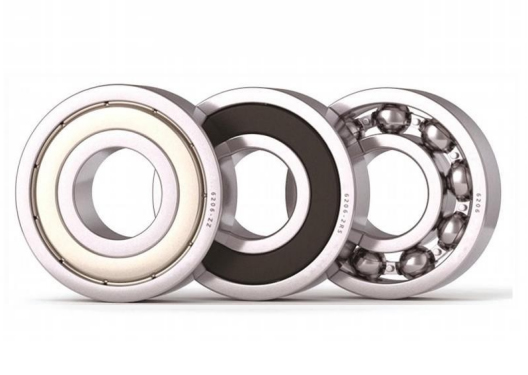There are many types of bearing products, and bearings can be divided into ball bearings and roller bearings according to equipment usage scenarios and requirements. Different types of bearings have significant differences in performance, principles, and other aspects. Understanding the differences between ball bearings and roller bearings can help users find the bearings that are suitable for themselves, but what are the differences?

1. The principle is different
Ball bearings are devices that install spherical alloy steel balls between the inner and outer steel rings, reducing friction through rolling and improving mechanical power transmission efficiency. Roller bearings, on the other hand, mainly achieve good accuracy and rigidity by installing rollers to make circular contact inside the bearing and adjusting the pre tension appropriately. In special occasions, a tapered inner ring can also be used.
2. Different performance
Ball bearings have a small bearing area and are prone to mechanical damage during high-speed operation. Therefore, needle roller bearings are adopted in heavy-duty mechanical transmission to increase the bearing surface, improve mechanical transmission efficiency, and reduce mechanical damage. Roller bearings have good precision and rigidity, and can also use tapered inner rings to adjust the working clearance of the bearing freely.
What is the difference between ball bearings and roller bearings
3. Different uses
Ball bearings, due to their structural factors, cannot withstand large heavy loads and are commonly used in light industrial machinery, mainly in low load mechanical transmission equipment. The clearance adjustment of roller bearings varies greatly, which can meet the zero clearance requirement of printing machine drum bearings.
1. Ball bearings have low internal friction resistance, low power consumption for machines, high transmission efficiency, and are relatively easy to start.
2. Ball bearings are produced with standardized dimensions, so that they can be replaced directly in case of problems. The installation and disassembly operations are simple, and subsequent maintenance is very convenient.
3. The internal structure of ball bearings is compact, lightweight, and the axial size has been reduced, which can adapt to the installation and use needs of various machinery.
4. Bearings have high precision, high speed, and minimal wear. Compared to others, these types of bearings have a longer service life.
5. Due to standardization, this type of bearing is more suitable for large-scale production, with stable and reliable quality and relatively high production efficiency.